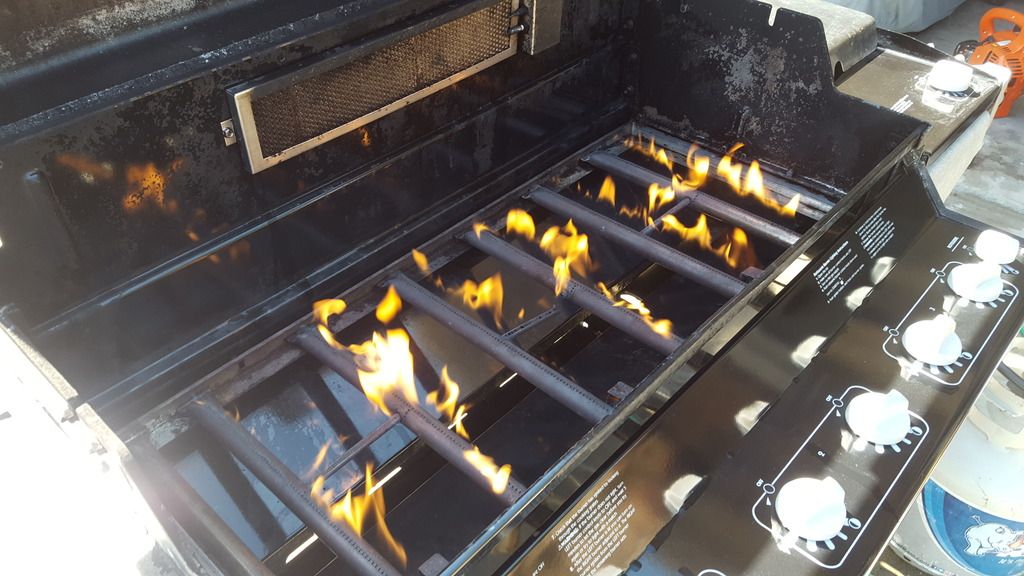I'm so looking forward to restoring this Genesis, but it looks like I'm off to a crummy start! My fault, of course.
Picked up a little redhead, and thought I was in business. It had the Liquid Propane connector and everything. Flipped over the control panel (the porcelain piece with text that lists the proper meat cooking temperatures) and saw the factory sticker. "Type of Gas: Natural". DOH!
How can I tell if this unit has been converted to LP or not? Do the current photos give any indication as to what fuel it currently uses?
Is it as simple as replacing the burner tubes? Or would the entire manifold be different?
The current manifold has a threaded nipple that threads perfectly onto a standard LP hose with regulator. Would a natural gas connector be threaded/sized differently?
For what it's worth, the manifold appears to have very tiny output holes (almost as small as a pilot light for an LP patio heater I recently took apart).

Oh, and also, the two thumb bolts that attach the manifold to the firebox? Yeah, they snapped right off.
Have any tips on the fuel type or the broken bolts? Any help to steer this project in the right direction would be greatly appreciated!
Thanks!
Picked up a little redhead, and thought I was in business. It had the Liquid Propane connector and everything. Flipped over the control panel (the porcelain piece with text that lists the proper meat cooking temperatures) and saw the factory sticker. "Type of Gas: Natural". DOH!
How can I tell if this unit has been converted to LP or not? Do the current photos give any indication as to what fuel it currently uses?
Is it as simple as replacing the burner tubes? Or would the entire manifold be different?
The current manifold has a threaded nipple that threads perfectly onto a standard LP hose with regulator. Would a natural gas connector be threaded/sized differently?
For what it's worth, the manifold appears to have very tiny output holes (almost as small as a pilot light for an LP patio heater I recently took apart).

Oh, and also, the two thumb bolts that attach the manifold to the firebox? Yeah, they snapped right off.
Have any tips on the fuel type or the broken bolts? Any help to steer this project in the right direction would be greatly appreciated!
Thanks!








